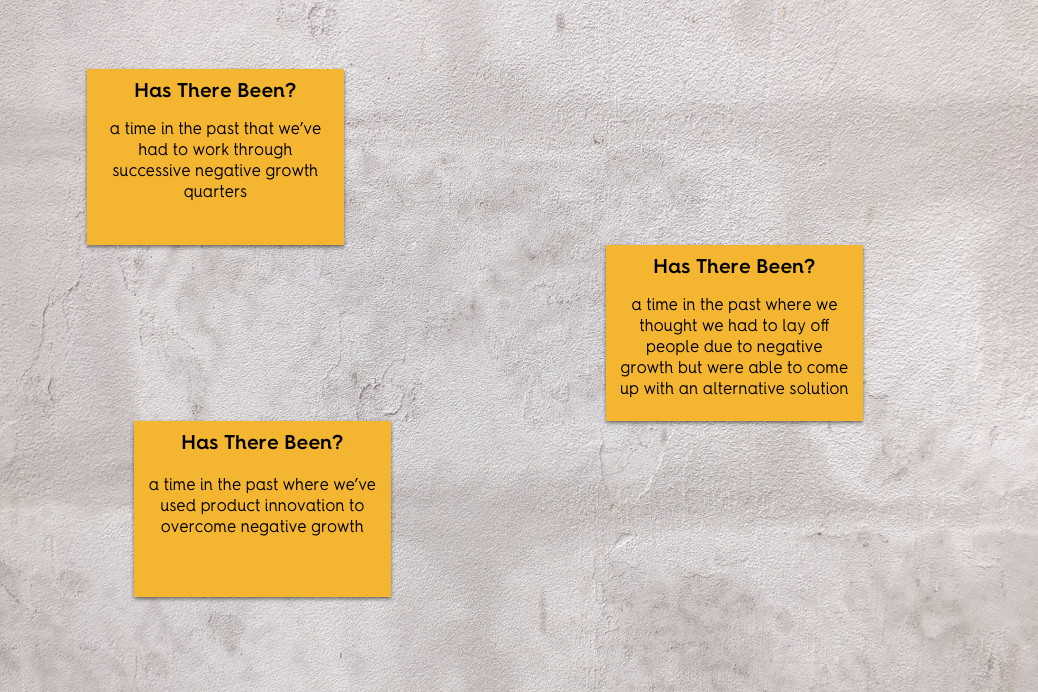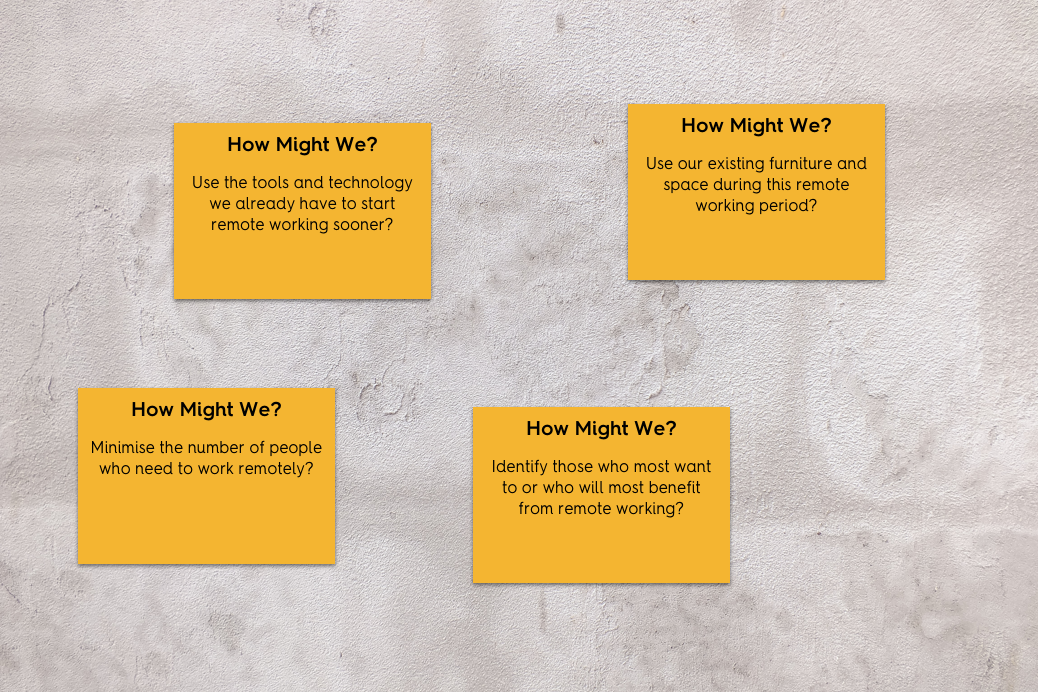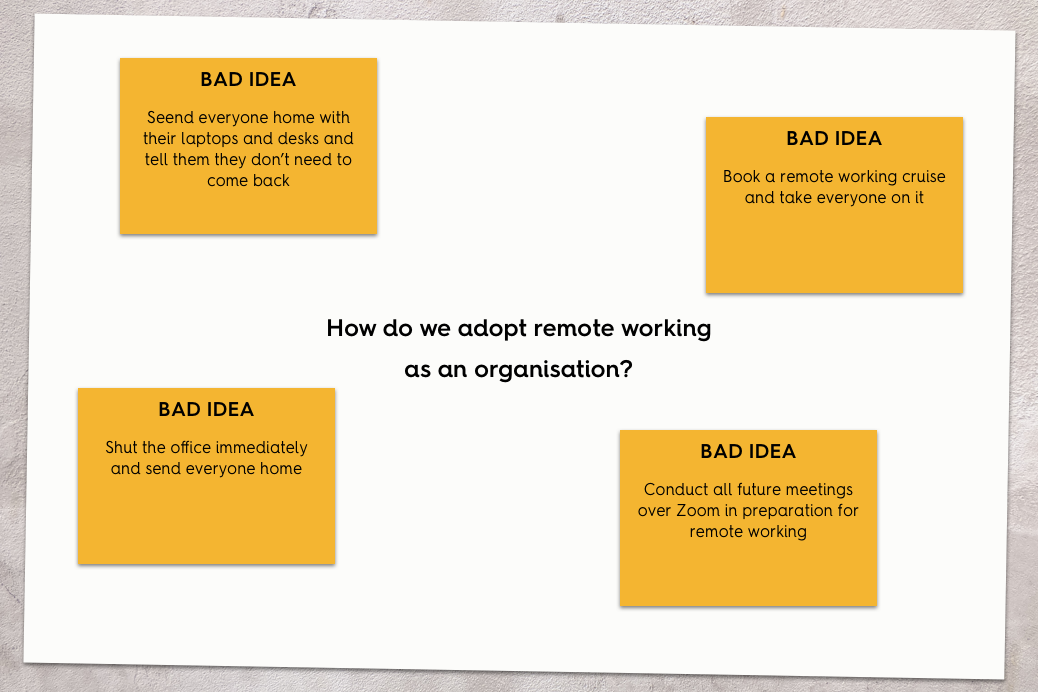
Three Great Techniques for Reframing Problems and Coming Up with Solutions
Sixty Second Summary
We’re living through interesting times. As well as the global challenges that affect every business - COVID-19, Climate Change, increasing resource scarcity - we still have the local and personal challenges that we face as a business, organisation, or even as an individual.
Today, I’d like to share with you three techniques that I’ve found, having tried them with businesses and individuals, work wonders in helping you reframe problems as seeds for potential solutions, flipping them on their head.
Full Article - 5 Minute Read
Tried and Tested Techniques
Each of the techniques I’m about to share with you have been tried and tested by some of the biggest proponents of Design Thinking on the planet. Companies like Google and IDEO, leaders in their fields, use these techniques and others like them to take the problems facing their businesses and reframe them as questions to be answered or opportunities to be pursued.
Whilst each of these techniques can be used in isolation, they also work well with other activities and can sometimes be found within a larger activity or workshop, such as an Innovation Lab or Remote Design Sprint.
Technique One: Has There Been?
Our first technique for reframing problems starts by taking a trip down memory lane, asking those in the room/workshop “Has There Been?”. Many of the problems you face as a business aren’t as novel as they first seem, and a recollection of previous problems and experiences from your team may be all you need to find the solution or opportunity you’re looking for, especially if you’re working with a diverse group of people.
With the “Has There Been?” technique, you start with the problem you’re trying to address and you ask ‘Has there ever been a time in the past that we’ve had to [insert problem here]?”. For example, “Has there ever been a time in the past that we’ve had to work through successive negative growth quarters?” or “Has there ever been a time in the past that we’ve had to work remotely at short notice?”.
With these questions asked, members of the team then set about discussing and recollecting times in the past where this exact problem or a problem similar to it has been addressed by them or someone they know. This may have been something they’ve addressed in their current position, or may even be some institutional knowledge they’re able to bring forward from a previous role or company.
As this technique requires only recollection of what has happened before, it’s a good place to start with those who feel they aren’t so creative, or as a way of getting the “easy wins” out of the way early on in the process. This may not be the technique to go for, though, if you’re looking for an innovative new idea to drive your business forward.

Learn More By Joining Our Mailing List
Every month we send out one or two emails to The Familiar Mailing List with the latest information about Design Thinking and Strategy, Remote Design Sprints, and us as a company. If you’d like to keep in touch, make sure you sign up now.
Technique Two: How Might We?
One of our favourite techniques at The Familiar, and one we use in a lot of problem solving workshops, is the “How Might We?” exercise popularised by its use in Design Sprints and other Design Thinking Workshops.
In this activity, everyone in the group is working at the same time to come up with questions that can help turn the problem you’re facing into the source of potential opportunities and solutions.
Once you’ve identified the problem you’re looking to solve, all you need to do is give each person in your team a stack of post-it notes and about 5 minutes. Working individually, each person should try to come up with as many questions, starting with “How Might We…” as they possibly can, each designed to reframe the problem you’re facing as a solution-prompting question.
Using an example from Technique One, let’s look at the problem of “As a company we must transition to remote working in a short period of time”. What sort of questions could you ask, starting with “How Might We”, that could reframe that problem/insight as the seed of an idea or solution.
- How might we use our existing technology to start remote working?
- How might we keep people connected when we’re not working in the same space?
- How might we use remote working to move to asynchronous working?
- How might we use remote working to improve work/life balance?
- How might we use our existing furniture and space during this remote working period?
- How might we minimise the number of people who need to work remotely?
- How might we identify those who most want to work remotely?
- Etc, etc
With a group of people, a stack of post-it notes, and about five minutes, you’ll quickly have a bunch of questions that you can start to prioritise and vote on, narrowing down to one or two that you can then use as the seed for your solution finding.

Technique Three: Bad Idea Brainstorming
When it comes to creative problem solving, those who don’t practice it too often are often put off of the idea by the thought that they must come up with great and actionable ideas with everything they write down. They’ll fret and worry about putting down a bad idea, limiting their impact and participation in the activity. That’s where the “Bad Idea Brainstorm” comes in.
Like any brainstorm (or mind map, if you prefer) you will have done before, you start with the problem you’re trying to solve written in the middle of a piece of paper, or on a whiteboard, or on a Mural board. Then, each person in the group adds their ideas to the board. But, with a Bad Idea Brainstorm, participants in the activity are only allowed to put down bad ideas. Good ideas are forbidden, we want the worst ideas you can come up with.
Once all of the bad ideas have been noted down, or after a defined time period (5-10 minutes works best for collaborative brainstorming), choose someone from the group to go around the brainstorm and read out all of the ideas that have been written down. The ideas should be TERRIBLE.
So, now you have a bunch of bad ideas, what do you do next? Well, you take each of the bad ideas and you try to flip it into a good idea, working as a group if it helps, until the worst ideas on the board become great ideas you can take forward into actionable steps to help you solve your problem.
Note: Bad Idea Brainstorming can also be used as a warm-up to the other two techniques listed here, giving everyone in the room 5 minutes to come up with bad ideas and get them out of their head, making room for good ideas and warming up everyone’s creative synapses ready for the main event.

Not Just For Problems
Throughout this post, I’ve used the word “problem” to describe what it is we’re trying to solve, but this doesn’t have to be the case. For each of these three activities the word “problem” could be changed for the word “insight”, with the activity being used to come up with ideas you need to best benefit from that insight.
These exercises also work well as part of a greater whole, such as a Lightning Decision Lab or Remote Design Sprint, where they can be used to help set the tone for the rest of the work ahead. For example, we’ll often use How Might We’s on Day One of a Remote Design Sprint, after we’ve identified the core problem, to come up with and vote on a question that we’ll then spend the rest of the Sprint answering.
How Do You Reframe Your Problems?
Do you have a favourite technique for reframing your problems? Is it one of the three I’ve mentioned here, or is it something completely different? Let us know by sharing this post with your favourite reframing technique on Twitter or LinkedIn, making sure you tag The Familiar.
I can’t wait to hear what your techniques are, and we may even feature one or two of them in a future blog post (with your permission).